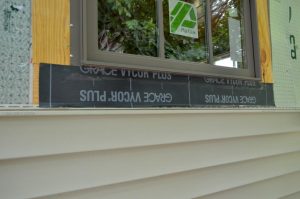Contractor Q & A
A few weeks ago, ProTalk expert contractor, Dino Tudisca, invited readers to ask their home project questions. Here are the answers:
- Thinking of remodeling my kitchen. Where should I start & what are the most important things to remember? – William & Mary via Facebook
Kitchens are one of the most fun and challenging rooms to remodel. It really has become the central hub of family activity and social entertaining. Because of this, it really has a major impact on the family dynamic.

Like most building related projects, it all starts with a good plan or design. I remember during my time with Extreme Makeover: Home Edition that we would have several pages of design details just for the kitchen millwork.
For that reason, I definitely recommend working with a designer first, before jumping to a contractor. I work with a local designer at a small kitchen cabinet supplier. She will meet with the clients, create a custom design, and work with me as the contractor on lead times and any items that we may be unfamiliar with. She will also walk the client through all the door styles, finishes, colors, hardware options and custom pieces, like wine racks, spices drawers, recycling pull outs, etc.
In terms of what project to start with, the cabinets are typically the first item to be installed in a full kitchen remodel (unless you’re replacing flooring!), followed by any backsplashes and countertops.
- How do I choose the remodeler that’s right for my project? – John via Twitter

Matching the right contractor with the correct type of project and homeowners may in fact be the most important single factor to a successful project. So important that it was the subject of my first series of blogs.
How to Prepare for a Consultation with a Contractor
How to Evaluate a Potential Contractor
Key Questions to Ask a Potential Contractor
Questions to Ask Yourself Before Hiring a Contractor
I will hit a few of the bullet points here though.
Number one is sources. There are many ways to find a contractor. Yes there is Google, and other paid services to locate contractors, but I personally would stay away from those options.
Local Home Building Associations are a great place to start. Don’t just go to their web site, call the office, describe the project and I am sure the office staff will give you several great people to call. The local Chamber of Commerce will likely have some insight as well. And don’t forget to ask neighbors, co-workers and friends for referrals.
Now matching your prospective contractor with your project requires some due diligence. Ask:
- Have they have done projects such as yours in the past?
- Can you speak with past clients, preferably clients with in the last 12 months? Can you see pictures/visit the jobsites?
- Can you have the addresses of some current projects? Even if not related to your project, it’s a good idea to drive by a few times during the week. Is the site clean and safe? Is work progressing?
- How early can they start? What is the projected end date? Take this information and outline the payment schedule. Also, double check your insurance certificates that relate to the work being done.
The best way to find the contractor for you? Communicate openly and honestly about the project. As long as you feel comfortable and heard, and he/she comes recommended, it’ll be smooth sailing.
- What do you think about the rain screen concept? – Greg A. via Facebook

In a continued effort to make our homes more energy efficient and to build a tighter building envelope, we have inadvertently created homes that no longer breathe. Truthfully, some building codes actually cultivate moisture which mold and rot can feed on. Fresh air exchangers are essential to combat this.
For these reasons, the rainscreen concept is very important to current building design. The goal is to create a gap of air between the siding and the waterproof surface beneath it. This approach has been used for many years for masonry and stucco – In fact, oftenin wet climates, this practice is mandatory.
Early examples of rainscreens can be found in the wall construction of Norwegian-style barns dating back into the 1400s. These barns were built using a layer of open-joint wood battens or siding set over a traditional stone.
I remember reading in a trade journal about 10 years ago about the complete failure of Exterior Insulation and Finish Systems (EIFS) in coastal regions of the U.S. due to no rainscreen or wall drainage being implemented. Now, many codes in coastal areas require them.
But there are solutions. Building science has shown us how to avoid potential damage caused by water that leaks behind wall claddings. Proper installation of a house wrap—also known as a water-resistive barrier (WRB)—preferably with a rainscreen behind the wall cladding, enables us to build resilient homes that can last for generations.
ProTalk #ProTip: Vinyl siding cladding intrinsically uses a form of the rainscreen method.

It is also crucial that all substrates under the rainscreen be water tight. As with most water infiltration issues, the devil is in the details. Fortunately, with self adhesive window membranes and even new water resistant sheathings, manufacturers have a variety of solutions.
When you install a separate rainscreen, you can first cover the sheathing with any house wrap that will prevent water intrusion. I’ve also used taped Zip Wall sheathing with a rainscreen.
There are lots of different materials you can use to form a rainscreen, including 1×3 solid-wood strapping.
A favorite rainscreen material is Coroplast, a two-layer recycled-plastic sheet product that’s sold in 4×8-foot sheets and used mainly by sign makers and print shops. The outer layers of the product are held apart by parallel flutes that give the material thickness and rigidity. The flutes are continuous along the product’s 8-foot length. Coroplast is available in various thicknesses; for rainscreens, 3/8-inch-thick Coroplast works well. The material is easy to rip into strips using a table saw.
